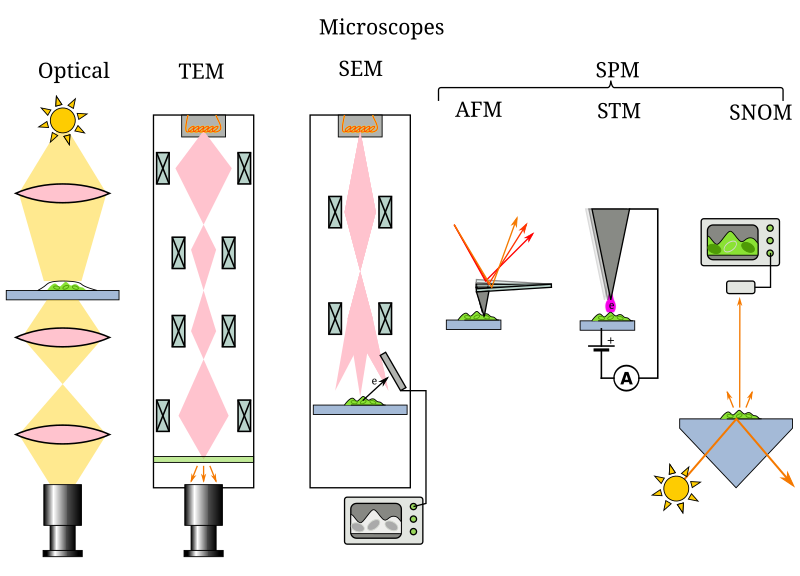If you have watched the news lately, you may have seen the almost alien-like appearance of the blood-red or yucky green Coronavirus with scary spikes that floats and bounces about in space, almost as if to attack you. Well, what is the true colour of the coronavirus and are those scary spikes real?
How do we see colour?
Let us first have a look at how our perception of colour works. The spectrum of visible light ranges from violet (400nm) to red (700nm). When light hits an object, some of the colours are absorbed by the object whereas the other colours are reflected off the surface of the object. What we perceive the colour of the object to be, is actually the colour that is reflected off the object.
For example, a leaf is not really ‘green’, it absorbs all the wavelengths of light except green and reflects green colour. Here are some questions for you:
a) What will be the colour of an object that absorbs all wavelengths?
b) What will be the colour of an object that reflects all the wavelengths of light?
Answers are at the end of the article.
Observing the microscopic world
To observe small specimens or samples, you may have used the microscope in your school laboratory. Those microscopes are called light microscopes. A light microscope uses light to illuminate the object that we want to look at. The light is then bent with the help of glass lenses to magnify and bring the specimen or sample in focus.
However, there is a limit to the size of the specimen that we can magnify using a light microscope. We cannot observe a specimen distinctly if its size is smaller than half of the wavelength of the light source used. In other words, specimens that are smaller than 250nm in size cannot be observed properly, as the lowest wavelength of visible light is 400nm.

To magnify and observe specimens that are smaller than 250 nm, one can use Electron Microscopes. Unlike light microscopes, electron microscopes use a beam of electrons instead of a beam of light to produce the image of the specimen. The wavelength of electrons is much shorter than that of light, and hence, we can use it to observe small specimens such as the Coronavirus which is about 100nm in size.
When we use a light microscope, we observe the magnified specimen directly through the eyepiece, however, we cannot do so using an electron microscope. The image produced through an electron micrograph is seen in the form of an electron micrograph, just like an image formed on a tv screen. The image is formed with pixels, where each pixel is of an appropriate brightness value. As a result, the image that we observe, appear in shades of black, white and grey. Then why do we see red and green coronavirus particles in the news? Of course, they have been given the artistic liberty to give the virus any colour they want.
Choice of Colour
The Coronavirus Sars-CoV-2 that causes COVID-19 and is responsible for the pandemic, is a dangerous virus that has killed nearly 2 lakh people worldwide. It is not something to be taken lightly. The message that one must take all necessary precautions needs to be driven home to every individual.
If the media had portrayed the virus using black and white or grey colours, it would not evoke the necessary response or reaction from their viewers. A clever strategy called neuromarketing has been used. Neuromarketing is a technique that used neuropsychological tools to bring about a desired effect on the consumer of the content. In other words, it is a technique used to manipulate your behaviour through slight or subtle cues.
Usage of appropriate colours is a very important tool in neuromarketing. For example, the colour blue is known to suppress appetite, and hence, restaurants never paint their walls blue, instead they go for warm appetite producing colours such as red, yellow and orange. The colour purple has been associated with royalty and nobility and hence, expensive luxury items such as perfume and clothes are coloured purple. The shade of the colour used also plays an important role. Red can signify love but the same red can also signify danger, one often sees danger or warning signs painted with that colour. The green colour that is used to colour the coronavirus is not the scenic green that one associated with nature, rather it is the yucky green that one associates with mucous or slime.
Size of spikes
Answering the question of the scary spikes, spikes are proteins present on the surface of the virus that bind to receptors on human cells. Imagine that the spike is like a key and the receptor is a lock that opens the door to the human cell. The spikes are not half as large or half as sharp and pointy as they appear to be on the news. It has been ingrained into our brains, that sharp pointy things can hurt us, and this fact exploited by the artists who depict the virus.
Overall, painting the coronavirus a disgusting colour and making it scary looking serves the purpose; you know that the Coronavirus is not something to be taken lightly, and you must maintain (social) distance from it.
Q&A
a) What will be the colour of an object that absorbs all wavelengths? – Black
b) What will be the colour of an object that reflects all the wavelengths of light? – White
Glossary
Neuromarketing – Neuromarketing is defined as the technique that studies and uses the brain ‘neuro’ activity in response to certain products or services to understand what is appealing to the buyer.
TEM – Transmission Electron Microscopy
References
https://kids.frontiersin.org/article/10.3389/frym.2013.00010
https://www.explainthatstuff.com/electronmicroscopes.html
https://neuromarketinginlife.weebly.com/blog/color-in-neuromarketing
Get stories like this one in your inbox: Sign up for our email and Subscribe Now To Get The Most Anticipated Edition Of Starry Stories Magazine For Free.
Photos, Vector Graphics & Illustrations Credits
Pixabay: 1 million+ Stunning Free Images to Use Anywhere
Pngtree: Millions of PNG Images, Backgrounds and Vectors for Free …
Read more Articles from Life Sciences
1. Read about What are Life Sciences and Careers in Life Sciences
2. Read the Most Searched Google Question and Answers about Tardigrades! – What do tardigrades eat on the moon? Can tardigrades die? Are Tardigrades dangerous?
3. Read about the The Secret Lives of Tardigrades
4. Read the Top 10 Interesting Facts about Tardigrades
About Author
Saunri Dhodi Lobo is pursuing M.Sc in Life Sciences with specialization in Neurobiology. Her interests include writing poetry, going for nature walks and swimming. Currently she is involved in research on Alzheimer’s Disease in fruit flies.
Read all Articles by Saunri Dhodi Lobo



Good information
Cool, starting from the basic and stopping where it gets complicated. Really helpful and easy to understand.
An interesting topic made even more fun. Kudos for touching the aspects not discussed usually. It’s in front of the eyes but hardly noticed.
This is so informativ, thank you for writing this!